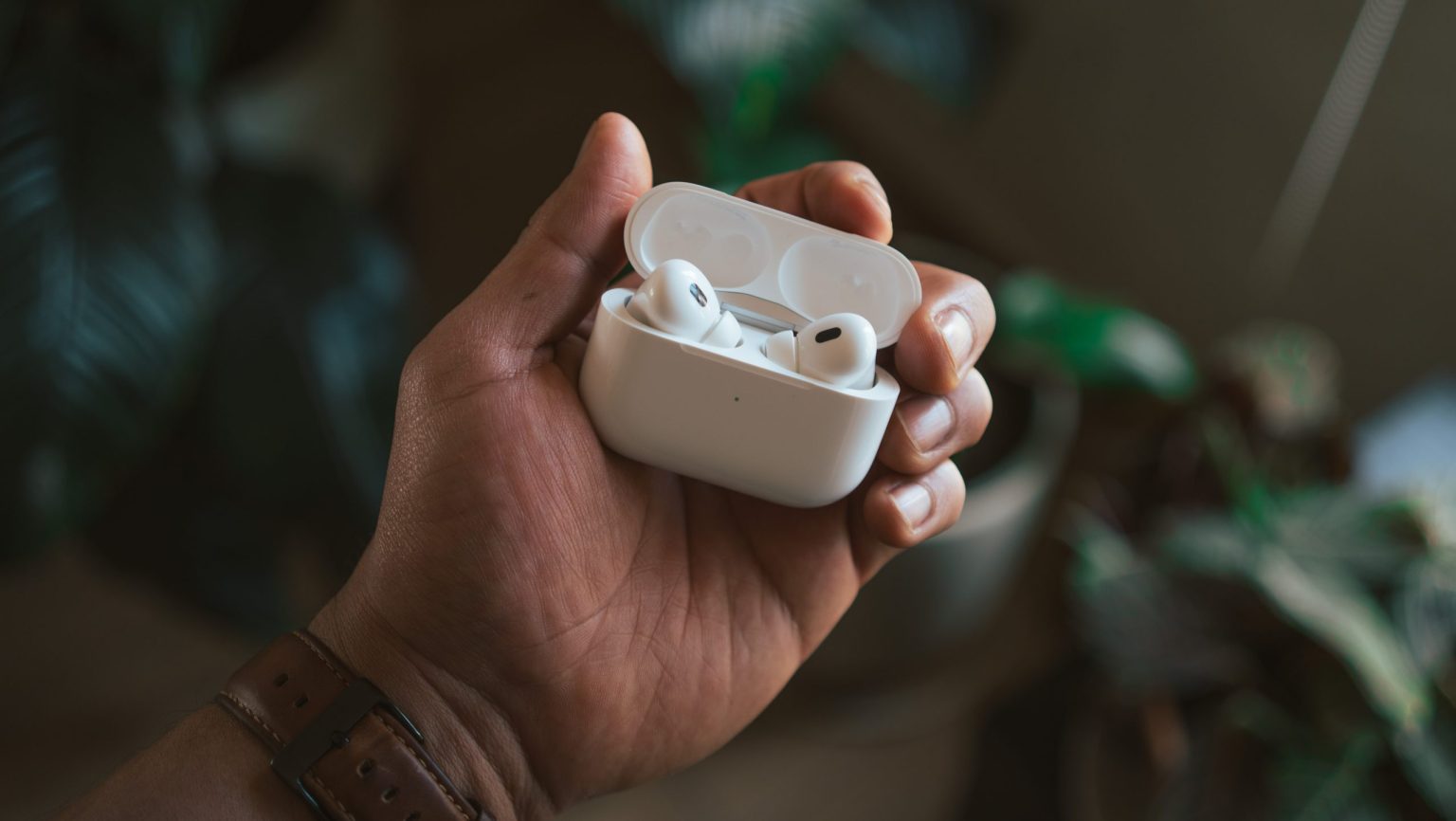Apple has recently been granted a new patent in relation to a sophisticated system of health sensors fitted alongside the exterior enclosure and tips of AirPods. The US Patent & Trademark Office (USPTO) published the patent given to Apple last week as first noticed by Patently Apple.
Titled “Biosignal Sensing Device Using Dynamic Selection of Electrodes,” the patent describes a system by which AirPods can measure a plethora of biosignals. Per the included illustrations, such a system would encompass multiple electrodes, including active and reference ones, that are fitted alongside the housing of a “wearable electronic device,” with the illustrations that Apple provided in its patent resembling the general appearance of AirPods Pro.
One possible embodiment described in the patent envisions a future iteration of AirPods that comes with an array of active electrodes embedded on the AirPods’ replaceable tips, in addition to reference electrodes placed on the earphones’ stems and other locations in the housing. The patent notes that not all electrodes need to be activated simultaneously, as AirPods can intelligently select a subset of sensors to measure a desired biosignal. Furthermore, a user can quickly start recording a measurement by placing their finger on one of the reference electrodes.

Discover new horizons, always connected with eSIM
Travel the world stress and hassle-free with the best eSIM service available. Enjoy unlimited data, 5G speeds, and global coverage for affordable prices with Holafly. And, enjoy an exclusive 5% discount.

The proposed system could be used to measure a wide range of biosignals, including the electrical activity of the brain (electroencephalography), muscles (electromyography), eyes (electrooculography), and heart (electrocardiography). The system can also measure heart rate by recording blood volume pulse (BVP) and the skin’s electrical conductance and perspiration via galvanic skin response (GSR).
The patent describes the inclusion of many electrodes as a redundancy measure that would ensure that the system is able to collect accurate data regardless of the user’s ear canal shape and size. An algorithm will be able to determine which subset of sensors are in optimum contact with the user’s ear, taking into factor other environmental aspects such as impedance level, ambient noise, and others.
Bloomberg‘s Mark Gurman previously reported that Apple is working to bring health features to future AirPods, including an FDA-approved hearing-aid mode and a body temperature sensor. While the patent doesn’t explicitly cover either of these features, it showcases Apple’s commitment to researching health-oriented features which could one day be available on more devices beyond the Apple Watch.





